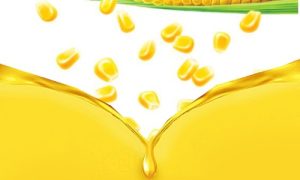Use maize instead of grain for ethanol’

New Delhi: The government should substitute water-guzzling rice with maize for ethanol production as part of a repurposed policy package in order to conserve water while moving toward the target of 20% ethanol blending in India’s fuel mix by 2025, leading agricultural economist Ashok Gulati said.
In an interview, Gulati, distinguished professor at Icrier, said a switch could bring policies in tune with protecting the planet while also ensuring high profitability to farmers.
His comments come after a ban on supplies of rice to ethanol distilleries—enforced to check prices—sparked concerns that the government may not be able to meet the ethanol target. Rice is the commonest grain used for making ethanol in India. Edited excerpts:
Do you think the ethanol target can be met?
We have made significant progress on ethanol blending after the policy was changed from molasses to direct sugarcane, maize and rice. We have achieved about 11%. Achieving E20 target by 2025 is a challenge but look at in how many years have we come to 11% from 4-5%. That gives hope. If we are not able to achieve 20%, can we achieve 16-17%?
At present, FCI must buy rice for PDS (public distribution system). As the broken rice cannot be given under PDS, it is being supplied to distilleries half the price. This is a very inefficient way of doing things. Your economic cost is ₹37 a kg for the rice that you bought, and you pass on the burden to taxpayers by giving subsidies to distilleries that fall under good income groups. So, why do that?
What else can the government do?
I do feel there is ample opportunity provided you play your cards well. The temporary ban on broken rice should encourage relying on maize more because rice is the biggest water guzzler.
To produce a kilogram of rice, it requires about 5,000 litres of water in Punjab and Haryana. If you rely on maize, you can save 80% of water compared to rice.
The economic cost of rice to the Food Corporation of India (FCI) is about ₹37 a kg.
They are giving the broken rice to distilleries at about ₹20 per kg. So, there’s a lot of subsidization. If they give a similar subsidy on maize, distilleries would love to go for maize and farmers would also love to go for the crop because of the assured price.
In Punjab’s maize market, prices are around ₹1,750 a quintal as against the MSP (minimum support price) of ₹2,090.
If you replace rice with maize, you need to give farmers the MSP to create an ecosystem as it will save 80% power subsidy.
So, can the target be achieved?
Rice needs about 24-25 irrigation, while maize only requires 4 irrigations, upper limit is 5 in the Kharif season.
Thus, you can save that much electricity.
Why don’t you give that part of electricity back to farmers, so their viability of maize reserve improves?
It will be aligned to nature, saving water and there will be no stubble burning, saving soil quality.
So, we have to re-purpose and re-align our policies that are in tune with protecting the planet while also ensuring high profitability of farmers.
If you can do this, there is no question that the E20 target will not be achieved. There is a market and farmers want an assured market.
Though the government halted rice supply to ethanol makers, do you think the country has a food security and cereal inflation concern?
It all depends on how much rice goes into ethanol production. Overall, exports that have been prohibited were more than 3 million tonnes (mt) of broken rice and about 6.5 mt of white rice. This makes 9.5 mt in total. There could be 2-3 mt rice going to distilleries. If this has been stopped, it will help tame a little bit of domestic inflation given that exports are restricted.
At present, FCI must buy rice for PDS (public distribution system) and all sorts of rice is going into that. As the broken rice cannot be given under PDS, hence it is being supplied to distilleries half the price.
Do you think sugar area needs to be increased to meet E20 target in the coming two years after the government halted rice supply to distilleries?
I do feel there is ample opportunity provided you play your cards well. You have a wonderful opportunity in North Bihar–that is where natural water from the Himalayas flows. Every alternative second or third year there is flooding in North Bihar. Sugarcane is another crop that demands good amounts of water. You convert water into gold by setting up factories and mixing up ethanol complex with crude oil. In Maharashtra, the problem is inadequate water and sugarcane is a 100% irrigated crop. Out of total cultivated area in Maharashtra 4% is sugarcane that consumes two-thirds of the irrigation water of the state. I would not recommend too much ethanol coming from Maharashtra unless they put the entire crop under drip, which can save 50% water. Therefore, You (must) first go for sugarcane but less in Maharashtra and more in North Bihar and East Uttar Pradesh.
Amid double-digit inflation in cereal, the government has taken preventive measures. Despite all the measures, inflation is still high. What is your take on this?
The government’s priority is how to control food inflation, particularly cereal inflation meaning wheat and rice. At the wheat front, they don’t have enough stocks. Therefore, they will have to import and to do so, they have 40% import duty, and they should have brought that down to zero three months ago. It’s late but they can do it tomorrow, the day after tomorrow or whenever. This is to control inflation of wheat.
In the case of rice, we have ample stocks. In fact, our stocks are three-times higher than the buffer norm. Since the exports were going out, prices were going up. So, they put the export ban on white rice. There’s already an export ban on broken rice. This makes about 9.5 million tonnes together. This quantity will now remain in the system. They were offering rice at ₹31 a kg under OMSS, but the market prices were below. If you want to buy rice anywhere in Bihar, it is available at ₹25-30 a kg. They then reduced the price to ₹29 per kg. If inflation remains high because it’s a run up to the election and the government cannot afford high inflation, they can reduce the price further to ₹27-28 a kg. But that would amount to dumping by FCI as they selling rice way below their economic cost. This would hurt farmers’ interest. The best policy would be to provide income support to targeted beneficiaries rather than pulling prices down.
We have been witnessing milk inflation for a while now. When do you think prices will cool off?
There was a drop in milk production. Generally, production goes up by 5-6% every year. Last year there was hardly any increase. It was flat at 221-222 million tonnes because of lumpy skin disease and dramatic increase in feed cost. These two kept milk prices up and inflation will hover between 8-10% for the coming 4-5 months unless they import skimmed milk powder and ghee that attract a duty of 60% and 40%, respectively. They need to bring down import duties of these milk products.
Tur (pigeon pea) prices have been firm since the beginning of the 2022-23 season, resulting in higher inflation in the last few months. What is your outlook on pulses inflation?
In pulses, you have to watch for tur. Tur inflation is likely to go out of hand unless the government quickly imports at least a million tonnes from African countries and Myanmar. Otherwise, tur will give you a hard time.
How do you expect prices of vegetables, especially tomato, onion and potato to behave in the remaining period of the ongoing quarter ending September?
In vegetables, tomato inflation rate is seen to be in three digits and may cross 200% inflation rate. Our research shows tomatoes prices by August-end will start coming down and in September, they will come down to their normal level to a little over ₹30 a kg with fresh arrivals from Maharashtra hitting the market. Crops that come in June and July from Kolar belt faced massive damage. Crops were damaged in Himachal Pradesh too. This is the reason why prices flared up.
The government cannot import tomatoes at short notice from nearby countries. Hence, there are short-term solutions like tomato puree.
In the case of onion, prices are seen going up further because Rabi onion which is harvested in April last for 4-6 months and much of the stock is with farmers without proper care. When it rains heavily, they are exposed to moisture. So, the damage has been quite big. The new crop will take two months to come. You will have a problem from late August till September. Prices are likely to go up and it won’t be surprising if it touches three digits but unlikely to touch ₹200 a kg. It may go up to ₹99.99 per kg from the current levels of ₹30-40.















